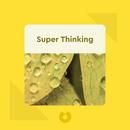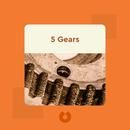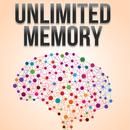Super Thinking: The Big Book of Mental Models
Your highlights:What’s in it for me? Hacks to help you think smarter.
What is worldly wisdom? Let’s take each word in turn. Worldliness means being concerned with ordinary life. Wisdom, on the other hand, implies knowledge of the big picture when it comes to life as a whole. But there’s more to it than that.
20 March, 2020 02:13 Share
Well, that’s exactly the question Gabriel Weinberg and Lauren McCann set out to answer. Drawing on economics, physics, philosophy and a host of other disciplines, these blinks present a set of mental models that will help you understand the world, make better decisions and take your thinking to the next level.Along the way, you’ll learn what a fourteenth-century philosopher can teach you about dating; why avoiding errors is more important than being right; and what an Israeli daycare center can teach us about reciprocity.
20 March, 2020 02:15 Share
Super thinking leverages tried-and-true concepts to help us explain the world and make better decisions.
Life, however, is full of complicated conundrums and ambiguous evidence. Making up our minds often feels less like an act of reason than a stab in the dark. Surely there’s a better way? Well, there is – super thinking, a way of understanding the world that relies on proven cognitive blueprints to make sense of the jumble of data out there. Let’s unpack that. Every industry has its own mental models that allow practitioners to create "mental pictures" of a problem. These aren’t one-off snapshots, but techniques that can be reapplied time and again – that’s the "model" part. Put differently, they’re recurring concepts that explain the world.
20 March, 2020 02:15 Share
Fax machines were invented in the 1840s, but languished in obscurity for over a century. Why? Their cost meant only a few wealthy individuals and organizations could afford to adopt the technology. That affected the perceived value of faxing: even if you bought a machine, you wouldn’t be able to communicate with anyone you knew. As the cost came down, more people bought fax machines and more connections became possible. To put that into numbers, two devices can make one connection, five can make ten and twelve can make sixty-six. By the 1970s, faxing had reached critical mass. There were enough machines that the network itself became useful – if you had your own device, chances were you’d be able to contact anyone. Contemporary businesses have made a killing leveraging that insight. Critical mass told ride-sharing services like Uber and Lyft, for example, how many drivers they needed in cities before people would begin relying on their services.
20 March, 2020 02:16 Share
Avoiding unforced errors and arguing from first principles can help you be wrong less often.
Avoiding unforced errors involves paying attention to the way you reason things out. This is called arguing from first principles, and it’s all about thinking from the bottom up, starting with assumptions you’re sure are true. Elon Musk, the founder of the automotive and energy company Tesla, defines this as boiling things down to "fundamental truths" and going from there.
20 March, 2020 02:16 Share
How we look at something determines the way we think about it. Take it from nineteenth-century German mathematician Carl Jacobi. His motto? "Invert, always invert," which means that it’s often easier to solve a problem when you approach it from the opposite or "inverse" point of view.
20 March, 2020 02:17 Share
Before sending your résumé out, sit down and define your values. Is independence, status or money most important to you? Next, lay down your red lines – how far you’re prepared to commute, say, or the least-senior position you’re willing to accept. Finally, check those values against existing positions. That’s inversion in action: you’re not asking which jobs are available, but which ones suit your needs!
20 March, 2020 02:17 Share
You can also apply bottom-up reasoning to everyday decisions. Take job hunting. Lots of people waste energy applying for far too many positions, and then jump at the first opportunity that comes their way. First principles suggest a different approach.
20 March, 2020 02:18 Share
Ockham’s razor might just hold the key to your love life.
Twelve hundred years later, the English philosopher William of Ockham reached the same conclusion: when confronted with equally plausible and competing assumptions, the simpler is more likely to be true. Call it Ockham’s razor. The idea is to "shave off" unnecessarily intricate explanations. In other words, think horses, not zebras, when you hear hoofbeats.
20 March, 2020 02:19 Share
That’s also a great way of beating common logical traps. In 1983, the psychologists Amos Tversky and Daniel Kahneman presented a now-famous thought experiment that considered the following: Linda is 31, single, outspoken and clever. She studied philosophy and attended demonstrations at university. Which is more likely: that Linda is a bank teller or that Linda is a bank teller who is active in the feminist movement? Most people plump for the second option. That’s an example of the conjunction fallacy in action. This states that the probability of two events occurring in "conjunction" is always less than or equal to the probability of one event occurring alone. Remember: not all bank tellers are feminists. To go back to dating, what’s more likely – finding a mate who makes you laugh or finding someone who is funny and shares your exact cultural preferences, down to ice cream flavors? The answer tells you why it pays to simplify assumptions!
20 March, 2020 02:20 Share
Putting yourself in others’ shoes is hard but the veil of ignorance can help you make fairer decisions.
Working out other people’s motivations is tricky, especially when they’re strangers. The upshot? We jump to unfair conclusions. If a colleague sends us a curt one-line email, we think he’s being dismissive and discount the idea that he might just be in a rush. Psychologists call that a fundamental attribution error: While we explain our own behavior by looking to our intentions and external circumstances, we ascribe other people’s actions to essential characteristics. If you run a red light, it’s because you need to get to the hospital; if another driver does it, it’s because she’s inherently reckless.
20 March, 2020 02:21 Share
This model states that you should never attribute to malice what can be more easily explained by carelessness. Is your neighbor playing loud music to annoy you? Unlikely – he’s probably just forgotten how thin the walls are.
20 March, 2020 02:22 Share
go a step farther and think more objectively, you can use the veil of ignorance. That’s the name of a model developed by the American philosopher John Rawls in his 1971 book A Theory of Justice. Here’s how it works:Birth is a lottery. Some people luck out and are blessed with a wealth of opportunities; others go empty-handed. That doesn’t stop us believing that our own privileges and others’ disadvantages are deserved. This, Rawls argued, distorts our understanding of fairness. But imagine you had to design a fair society without knowing where you’d end up in it. Rawls concluded that if you couldn’t be sure whether you’d be born a slave or a free person, you’d decide that slavery itself was unfair. Put differently, you’d take the feelings and interests of everyone affected by a decision into account – not just your own. It’s a useful model to apply to your own decision-making. So say you’re a manager in a company that’s thinking about abolishing an established policy that allows employees to work remotely. As you see it, there are a lot of good reasons for doing that. But what if you put yourself behind the veil of ignorance – would you advocate against the policy no matter who you were? What if you were an employee caring for an elderly relative, or a single parent?
20 March, 2020 02:22 Share
If you don’t want to get left behind by social change, you need to become adaptable.
As the American scientist Leon Megginson pointed out, people sometimes confuse "the fittest" with strength or intellect or superior genes. The key, however, is adaptability – adjusting to a changing environment. And that’s the lesson the story of the dark peppered moth teaches us. Society also evolves over time. If you want to thrive in your social environment, you also need to become adaptable. So how do you that?
21 March, 2020 10:22 Share
One great way is by adopting an experimental mind-set. That’s a cycle of making scientific observations, developing hypotheses, testing them, analyzing data and formulating new theories. The most successful people and organizations adopt precisely that mind-set. They’re constantly on the lookout for new tools to boost their productivity, well-being and fitness.
21 March, 2020 10:23 Share
Take your health, for example. There’s an overwhelming mass of data out there suggesting that this or that diet is the best thing you can do for your body. Should you go vegan or paleo, or is fasting a better option? The only way to find out is to experiment. That’s more than just randomly trying different things, though. It means adopting a rigorous trial-and-error approach, trying different diets one by one and analyzing the results to figure out which works for you.
21 March, 2020 10:23 Share
The same goes for your "intellectual diet." If you aren’t experimenting with new ideas, you’re probably stuck with old, out-of-date ones. Notions change all the time, after all. You were probably taught that an asteroid wiped out the dinosaurs and that Tyrannosaurus rex were smooth-skinned reptilians. Well, today, a lot of experts have come to view that theory as outdated, while most paleontologists believe the T. rex was partly covered in feathers! Stick with old ideas, and your thinking will end up just as obsolete as those light-colored moths clinging to sooty trees.
21 March, 2020 10:23 Share
Anecdotal evidence and the fallacy that correlation implies causation skew our understanding of statistical data.
We live in a data-driven world. Quantification, once the preserve of scientists and engineers, shapes the way we understand everything from climate change to our personal lives. You might even be using apps that tally up your daily movements and tell you how much sleep you’re getting. That’s good, right? Well, yes and no. As the American writer Mark Twain liked to point out, there are "Lies, damned lies and statistics." Numbers, in other words, can mislead as easily as they can inform. And that’s why it’s so important to avoid statistical stumbles.
21 March, 2020 10:24 Share
The most common cause of error is relying on anecdotal evidence. That’s basically hearsay and personal experience. Evolutionarily, trusting such partial data makes a lot of sense. If you’ve seen someone eat a berry and get sick, you simply avoid the shrub in question rather than conducting a controlled berry-eating experiment. In other contexts, however, it’s a source of confusion. Think of the stories people tell about, say, their grandfather who smoked a pack of cigarettes a day and lived to the age of 90. These are out-of-the-ordinary cases that tell us nothing about average experiences. It’s a bit like going to a restaurant: you’re more likely to tell friends about your meal if it was outrageously good or bad than if it was merely mediocre. Smoking might not cause lung cancer in every case, but that doesn’t mean it doesn’t significantly increase the average risk.
21 March, 2020 10:25 Share
What’s missing in this account is the confounding factor, an often less obvious but correct explanation – namely, that people are vaccinated largely when more people get sick than usual. A common cold, against which a flu shot doesn’t provide immunity, ends up being misidentified, and the vaccination gets blamed for causing the very thing it prevented! And that’s the trouble with data – it helps us understand the world, but sometimes it helps us misunderstand it, too.
21 March, 2020 10:26 Share
Then there’s the mistaken idea that correlation implies causation – that is, if two events occur consecutively, one must have caused the other. You can see this fallacy in effect every year around the time people get their flu vaccinations. Inevitably, someone will get a cold at the same time, mistake it for the flu and attribute it to the shot they just got.
21 March, 2020 10:26 Share
Confusing social and market norms undermine reciprocity.
Let’s face it: life is full of conflict. In economics, these adversarial situations are sometimes described as "social games" pitting self-interested "players" against one another. Most conventional games are zero-sum: if you win, I lose. Unlike chess, however, real life isn’t black-and-white. Sometimes everyone can win.
21 March, 2020 10:27 Share
That’s a great example of reciprocity, the perceived obligation to return favors. It’s a pretty universal cultural concept. The Romans called it quid pro quo or "something for something." In modern English, we rephrase that as, "I’ll scratch your back if you scratch mine."
21 March, 2020 10:27 Share
Reciprocity is a social norm, a recognized if unwritten rule regulating social life. Obviously, we don’t always behave reciprocally. Sometimes it’s more appropriate to follow market norms. When you look at something from a "market perspective," you think of it in terms of your personal interests. A "social perspective," by contrast, asks if it’s the right thing to do. It’s the difference between asking, "Is this $60 babysitting job worth my time?" and "Should I help my friend out by looking after his kids for four hours?"
21 March, 2020 10:27 Share
Here’s why. Before the fines, latecomers felt guilty and made an effort to be more punctual. The introduction of a market norm undermined their sense that they owed the kindergarten teachers something – after all, they were paying, so there was no reason to feel bad. Interestingly, when the kindergarten abolished the fines, parents didn’t return to their old behavior – the experiment had undermined both types of norms.That just goes to show how important it is to apply the right conceptual models to situations. As the example of that Israeli daycare center shows, it pays to make sure you’re framing things in the right way!
21 March, 2020 10:28 Share
Final summary
The key message in these blinks:Super thinking leverages tried-and-true conceptual models to improve your decision-making and help you avoid common logical pitfalls. Gleaned from disciplines as diverse as physics, economics and philosophy, these "super models" cut through the complexity and shed light on the thorniest conundrums. Whether you’re using Ockham’s razor to select potential mates, applying critical mass to understand an emerging market or using the veil of ignorance to put yourself in people’s shoes, these ultra-adaptable tools are guaranteed to up your cognitive game.
21 March, 2020 10:28 Share
Weigh your decisions with a numbered pro-con list. The simplest way of approaching a big question is to draw up a list of pros and cons – arguments for and against a decision. Chances are, however, that you’ll attach different value to different factors. That’s where numbered pro-con lists come in. Here you’ll be valuing each factor on a scale ranging from minus ten to zero for negatives and zero to ten for positives, thus giving you an insight into the relative value of each item. So say you’ve been offered a job, but taking it involves moving to a new city. What gets a higher score – the location or the improved salary offer? As simple as it sounds, this is a powerful mental model that will help you conduct a systematic cost-benefit analysis before taking the plunge.
21 March, 2020 10:28 Share
About the book:
Super Thinking (2019) is a conceptual toolkit designed to help you cut through complexity and make better decisions. Drawing on insights from fields as varied as biology and economics, entrepreneur Gabriel Weinberg and statistician Lauren McCann present the "mental models" used by today’s top problem-solvers and decision-makers. But this isn’t a dry academic treatise on logic: apply these models to your personal and professional conundrums and you’ll be well on your way to becoming a super thinker in your own right!
About the author:
Gabriel Weinberg is the founder and CEO of DuckDuckGo, a multibillion-dollar internet privacy company. He is the author of Traction (2015), a guide to generating customer growth in the start-up sector.
Lauren McCann is a statistician and researcher with over a decade of experience designing and analyzing clinical trials in the pharmaceutical industry. She holds degrees in mathematics and operations research from MIT and has written for several prestigious medical journals, including the New England Journal of Medicine.
Blinkist takes outstanding nonfiction books and distills their key insights into made-for-mobile book summaries that you can read in just 15 minutes. Learn something new every day - on your smartphone, tablet or PC.
blinkist.com


















